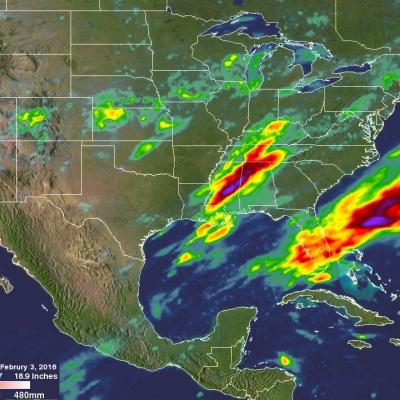GPM Views Tropical Cyclone Forming Near Madagascar
The GPM core observatory satellite flew over a forming tropical cyclone in the South Indian Ocean between Madagascar and Reunion on February 8, 2016 at 2137 UTC. Low vertical wind shear will assist in the evolution of the tropical low as it moves slowly toward the southwest. Rainfall derived from GPM's Microwave Imager (GMI) and Dual-frequency Precipitation Radar (DPR) data revealed that powerful convective storms near Madagascar's eastern coast were found to be dropping rain at a rate of over 94 mm (3.7 inches) per hour. 3-D measurements were made of convective storm tops with GPM's radar




